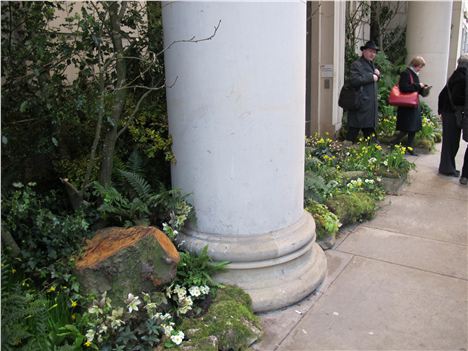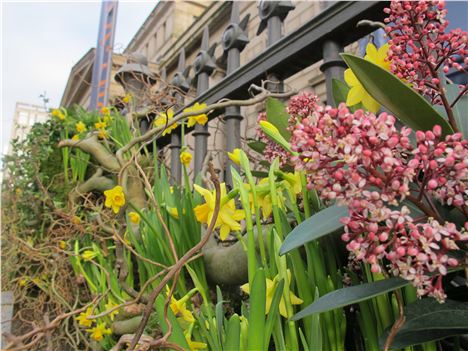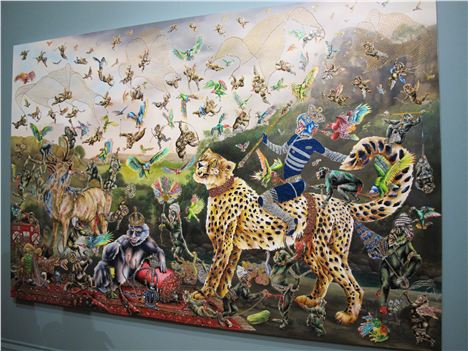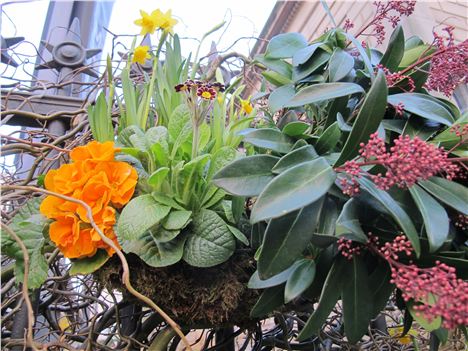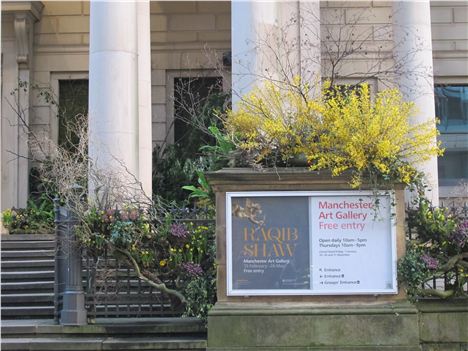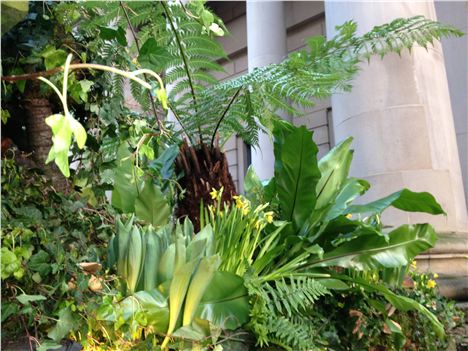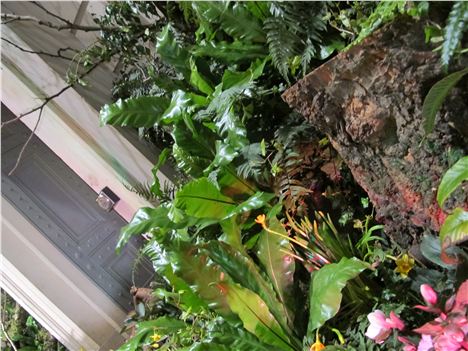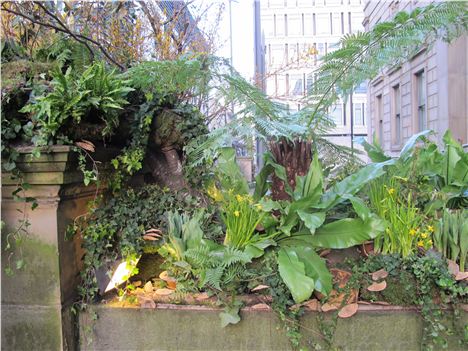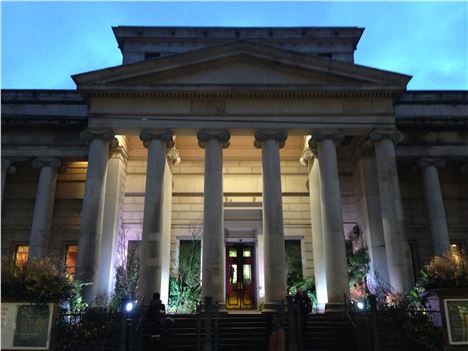RAQIB Shaw’s playful, colourful, shocking, even brutal, show at Manchester Art Gallery is turning heads.
And this is before people have even entered the gallery.
The dominant flower with which Shaw has chosen to decorate the outside of the gallery is wholly appropriate: the narcissus. This is the flower named for the boy who fell in love with his own reflection.
Shaw’s spectacular one-man eponymous exhibition not only demonstrates the usual artist/public gallery relationship but adds something extra.
It adds his own cash.
Shaw himself has reached into his wallet to enable his exhibition to leap out from the gallery with a floral wrap around the boundary wall and through the building’s portico. Confidential can’t remember when an artist, albeit a wealthy one, was so generous.
True, a decade ago, architect Daniel Libeskind pared back his ideas when only two thirds of the original budget was secured for the Imperial War Museum North. But as far as we’re aware he never spent any of his own money on the site.
Raqib Shaw's motivation behind stumping up cash seems to lie with his long term love of nature and his innate flamboyance - this boy wants to create a stir.
Shaw, who now lives in London, has described how he ‘grew up in the mountains of Kashmir and was surrounded by beautiful flowers and nature all the time’.
Clare Gannaway, the exhibition curator, has noted that using plants and creating a garden as part of Shaw's work is a hallmark. His use of plants and natural materials reflects his personal passions and also the environment he's created in his London studio - where he lives as well as works.
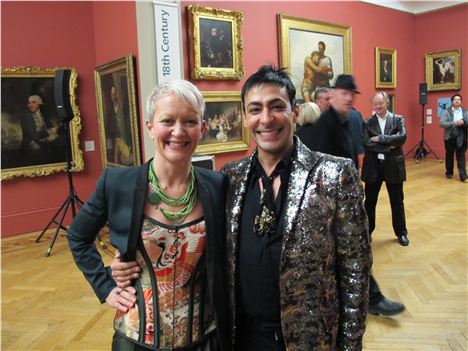 Maria Balshaw, gallery director on the left, the flamboyant Mr Shaw on the right
Maria Balshaw, gallery director on the left, the flamboyant Mr Shaw on the right
As for the artist's innate flamboyance, this is apparent as soon as the first of his 28 works hoves into view in Manchester Art Gallery. These pieces evoke Old Masters such as Holbein and Bosch, the lavish world of Persian miniatures and Kashmiri and Japanese textiles.
They are startling in their detail, unnerving in their content, rich, lush, intense. But the intensity seems turned inward; much of the imagery reflects Shaw’s view of his own nature and it's tortured relationship with the world.
In which case the dominant flower with which Shaw has chosen to decorate the outside of the gallery is wholly appropriate: the narcissus. This is the flower named for the boy who fell in love with his own reflection and came to doom. Much of the violent imagery in Shaw's work could be seen as destructive.
One final point.
A sweet element to the garlanding of Manchester Art Gallery was the timing.
Installation coincided with the felling of the trees in the Peace Garden, fifty metres from the Gallery, as part of the St Peter’s Square masterplan.
The felling has resulted in a welcome opening out of views in the area, but it also meant toppled trees could be given an afterlife. These now provide the lattice through which the flowers and small plants have been woven on the Manchester Art Gallery wall and fence. There's an exquisite poignancy to that.
 Where the trees stood with Art Gallery in the background
Where the trees stood with Art Gallery in the background
Meanwhile the rubberneckers dodge trams on Mosley Street to take pictures of the flowers and the Art Gallery.
Shaw's inimitable style might have also - and surely he knew this would be the case - given his show the best publicity possible.
Raqib Shaw, 15 February–26 May 2013. Manchester Art Gallery
Mosley Street, Manchester M2 3JL.
You can follow Jonathan Schofield on Twitter here @JonathSchofield









